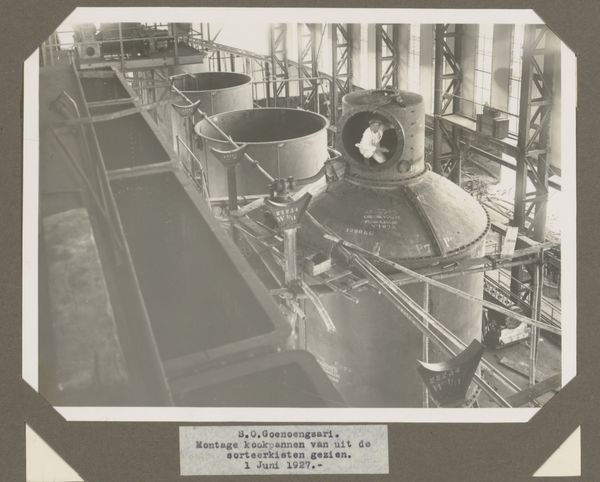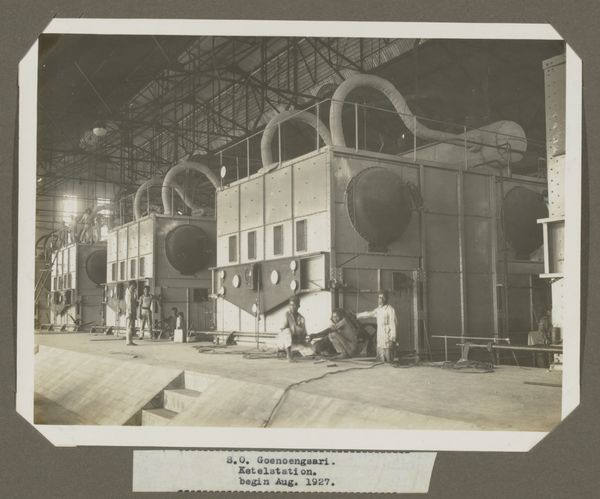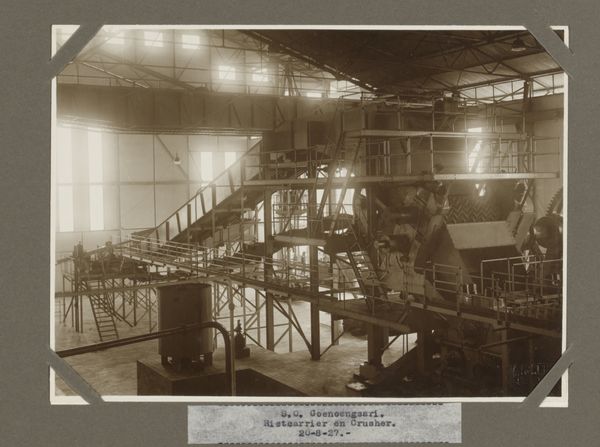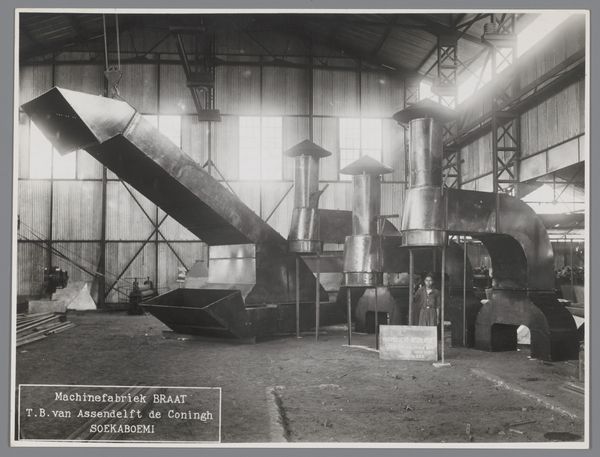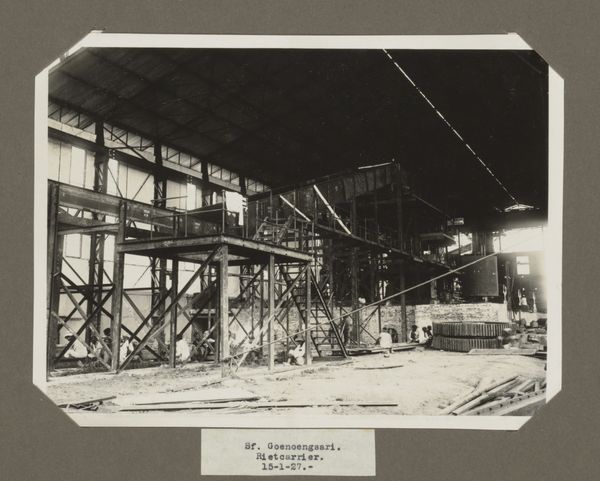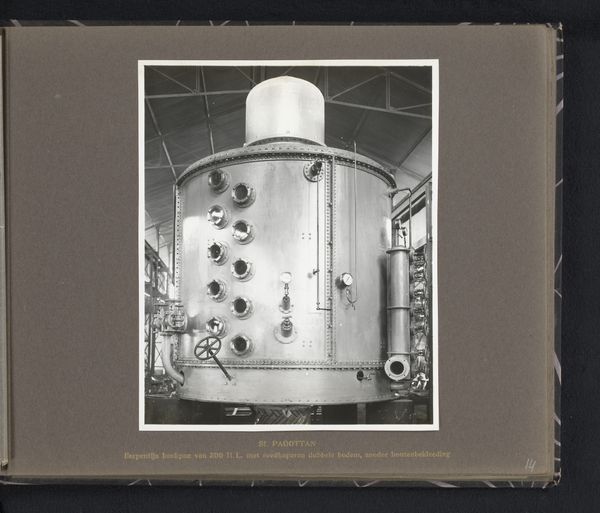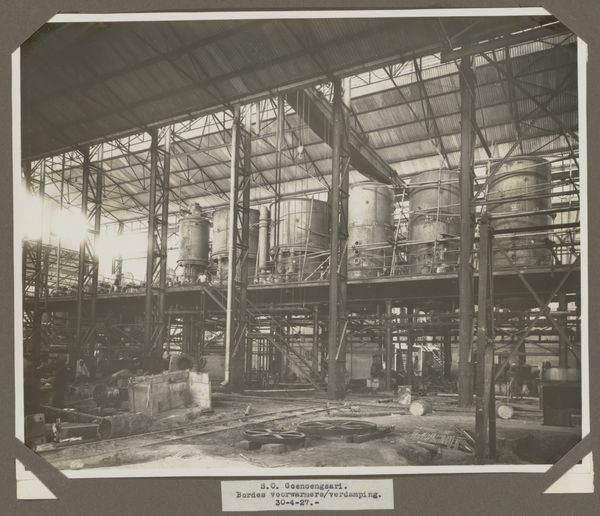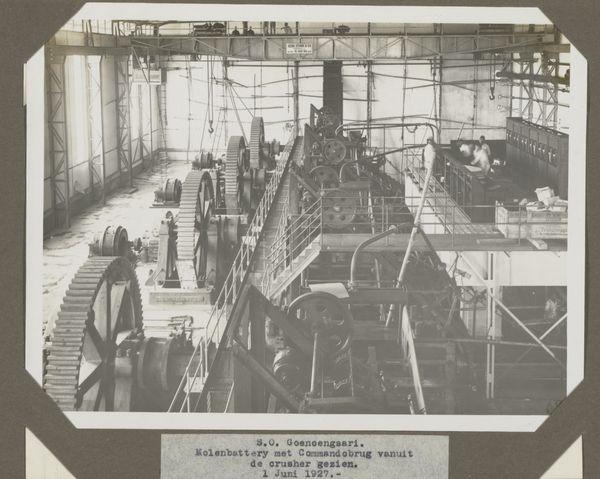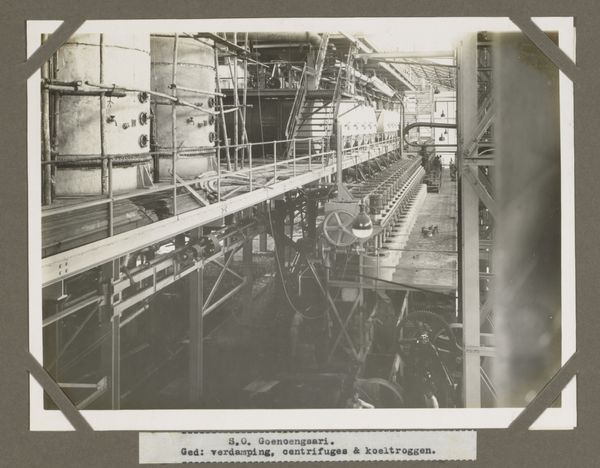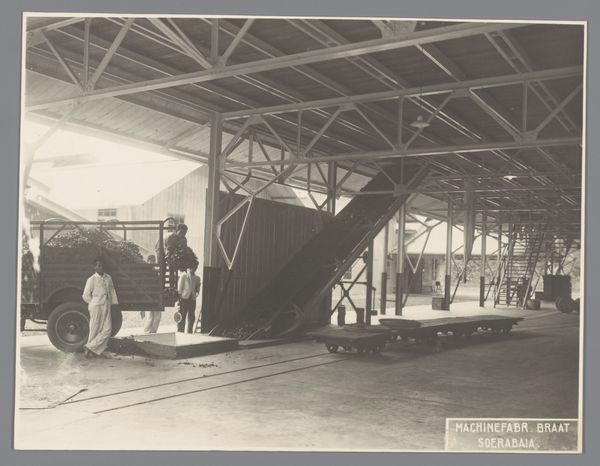
photography, gelatin-silver-print
#
archive photography
#
photography
#
gelatin-silver-print
#
modernism
Dimensions: height 177 mm, width 235 mm
Copyright: Rijks Museum: Open Domain
Curator: Here we have a gelatin-silver print from between 1927 and 1928, titled "S.O. Goenoengsari. Onderstuk kalkoven. begin Aug: 1927." Editor: Wow, it’s… imposing. The industrial architecture is monumental, almost like a temple of labor, isn't it? And the monochromatic palette lends a strange, dreamlike quality to the whole scene. Curator: It's quite striking. The image depicts workers around the base of a lime kiln. I find it fascinating how such photographs, seemingly documenting industrial progress, also unintentionally capture the human element—the scale of labor, the fashion, even social dynamics are preserved through photography such as this one. Editor: I can almost feel the weight of the air there. The textures seem palpable—the rough-hewn planks of wood forming that makeshift barrier around the base of the kiln. Do you think the workers perceived themselves as figures within a historical moment? I imagine this kind of photo was about pure documentation, then, of course, gaining other meaning later. Curator: That’s a question photography always begs, isn’t it? And considering that photography during this period in that region was often intertwined with colonial projects, it's interesting to ponder what symbols these structures of industry might have represented to the local population then, both the potential for modernization as well as extraction. What is carried. What is lost. Editor: I wonder if the workers, with their poised stillness amidst labor, recognized themselves as vital symbols within a larger visual narrative of industry and colonial ambitions. Perhaps their posture and positioning hint at a silent defiance. Like, “yes, we see your modern world, but our lives remain distinct.” Curator: That's an intriguing interpretation. It encourages us to consider how these seemingly objective records of industrial activity were inevitably shaped by the photographer's own perspectives. The contrasts inherent in the era—modernism, labor, and the seeds of a postcolonial era—really reverberate through this single frame. Editor: It makes you wonder what a truly Indigenous photo from the same moment might look like. And in what ways this image then echoes and foreshadows present day questions about image making. Food for thought…or maybe, rather, lime for thought.
Comments
No comments
Be the first to comment and join the conversation on the ultimate creative platform.

